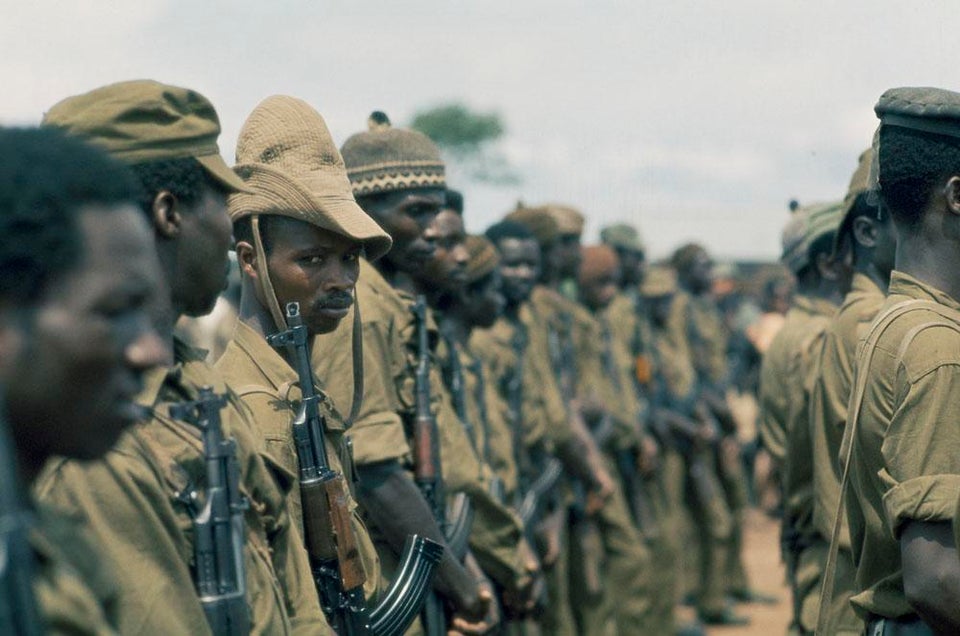The History of Guinea-Bissau

Source : RFI
Before being colonized by the Europeans, almost the entire territory of Guinea-Bissau was part of the Kingdom of Gabu, tributary of the Empire of Mali, of the Mandingas, which had flourished from 1235. Rich and sumptuous state, it extended between the Senegal River Region and Upper Niger.
The coast of Guinea-Bissau was discovered by the Portuguese Nuno Tristan in 1446 and, in the following years, began the trade of slaves, gold, ivory and spices. In the 17th century, English, Dutch and French merchants became interested in the slave trade and dominated some territories near Guinea-Bissau, which became a colony of Portugal in 1897.
At the beginning of the 20th century, with the English banning the slave trade in the region, the Portuguese decided to invest in the country’s farm. However, the population resisted and bloodthirsty fighting was fought. In 1936 the last revolt (Bijagós de Canhabaque) took place and the Guinean population was forced into forced labor and poorly developed infrastructure.
Colonial rule Portuguese progressed in a relatively quiet state, until the emergence of nationalist movements throughout Africa in the 1950s.
Fight for independence of Guinea-Bissau
In 1956, Amílcar Cabral, Luís Cabral, Aristides Pereira, Fernando Fortes, Elysée Turpin and Júlio Almeida created the African Party for the Independence of Guinea and Cape Verde (PAIGC). In 1963, the party decided to adopt armed struggle. The main reason was the Pidgjiguiti massacre on August 3, 1959, in which workers from the port of Bissau on strike were attacked by the International Police and State Defense (PIDE), which killed about 50 people and injured 100 others. August 3 has been transformed into one of the milestones of the struggle for liberation and is currently one of the most important holidays in the country.
In 1969, the PAIGC already dominated two-thirds of guinea-bissau’s territory, thanks to the help of the USSR and Cuba, confining the Portuguese to coastal cities.
In 1972, Amílcar Cabral established a government in exile in Conakry, but was assassinated in his home in 1973. The PAIGC unilaterally declared the independence of Guinea-Bissau and most UN member countries recognized independence. The following year, a coup in Portugal changed the political situation and all portuguese colonies in Africa quickly received their independence.

PAIGC fighters stand during the transfer of power ceremony from the Portuguese to the PAIGC (Partido Africano para a Independência da Guiné e Cabo Verde), garrison town of Polibaque City, Guinea-Bissau, 1974. Source : Reddit
Guinea-Bissau Today
In elections held in November 1999, Koumba Yalá of the Social Renaissance Party (PRS) was elected president of the republic. However, there was tension between him and the armed forces. On September 14, 2003, a coup d’état removed Yalá from power (on the grounds of ineptitude to solve the country’s problems) and the Political Transition Charter was adopted.
In April 2004 legislative elections were held and, in October of the same year, Ansumane Mané, who had never seen with good eyes the rise of Yalá, declared himself supreme head of the armed forces, but was eventually killed by opponents.
Although peace prevailed in the following years, Guinea-Bissau’s political life was troubled, with constant opposition opposition calls linked to media control, intimidation of opponents, non-enactment of the new Constitution approved by the National People’s Assembly, among others.
Soured in controversy, the 2005 presidential elections brought Nino Vieira back to the nation’s highest office, but the general situation continued to degrade and Guinea-Bissau became an international drug trafficking warehouse.
In March 2009, Tagme Na Waie, chief of staff of the Armed Forces and former political rival of Nino Vieira, was assassinated in an attack. The president was suspected to be involved. The next morning, the presidential palace was attacked and Nino Vieira was killed.
Raimundo Pereira, president of the National People’s Assembly, took over the presidency on an interim basis and, in the June 2009 elections, Malam Bacai Sanhá won. On his death in January 2012, Raimundo Pereira, who was already the head of government in office during the illness of Bacai Sanhá, took over the post on an interim level.
The presidential bid culminated in a new military coup in April 2012. A Military Command took control and announced the suspension of the Constitution. In May 2012, a transitional government was formed, composed of Sherifo Nhamadjo as president and Rui Duarte Barros as prime minister.

Presidential Palace
Source : Wikidata
In the April 2014 elections, José Mário Vaz (Jomav), supported by the PAIGC, won and formed a government with Prime Minister Domingos Simões Pereira, from the same party. Pereira was fired in August 2015 and Jomav appoints Baciro Djá as the new prime minister. However, the Supreme Court of Justice ruled unconstitutional the appointment and, after intense negotiations between the president and the PAIGC, Carlos Correia is appointed prime minister. Jomav was president of the country until 2020.
In the 2019 presidential elections, Umaro Sissocko won, but the results were contested by Domingos Simões Pereira. Currently he is the president, having as Prime Minister Nuno Gomes Nabiam.
A country that has recently gained its independence, Guinea-Bissau is still struggling to consolidate economically and socially due to successive coups and conflicts causing political instability.
References:
História da Guiné-Bissau. (s. d.). ASSEMBLEIA NACIONAL POPULAR.
Benzinho, J. & Rosa, M. (2016). Guia Turístico: À descoberta da Guiné-Bissau. Afectos com Letras
